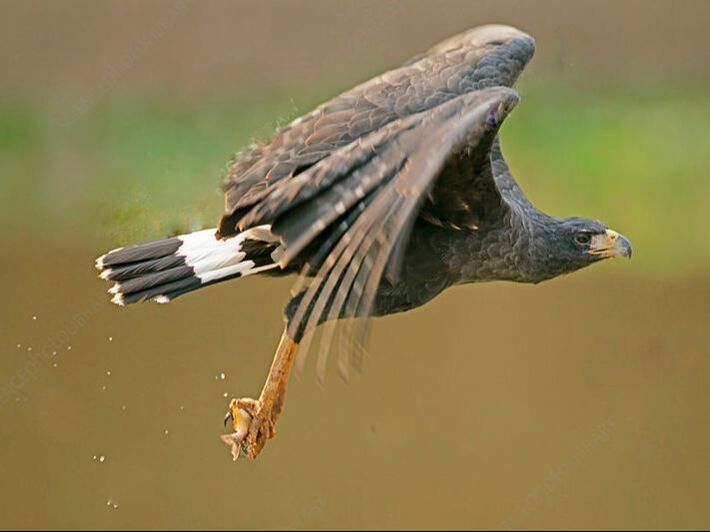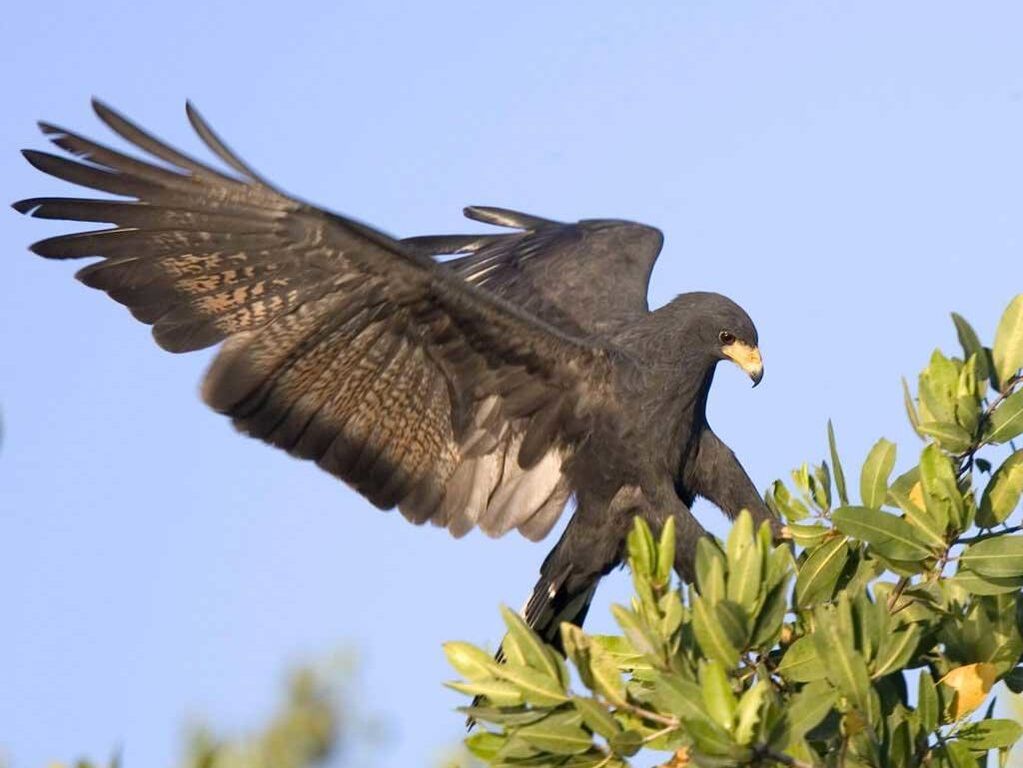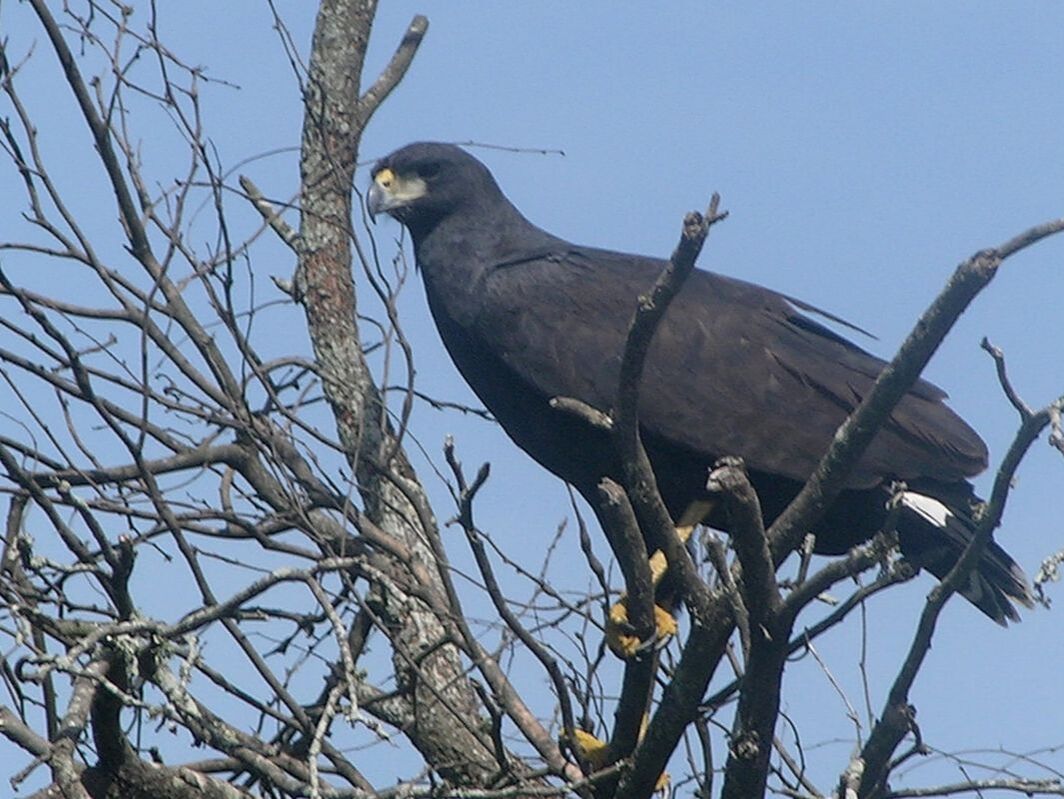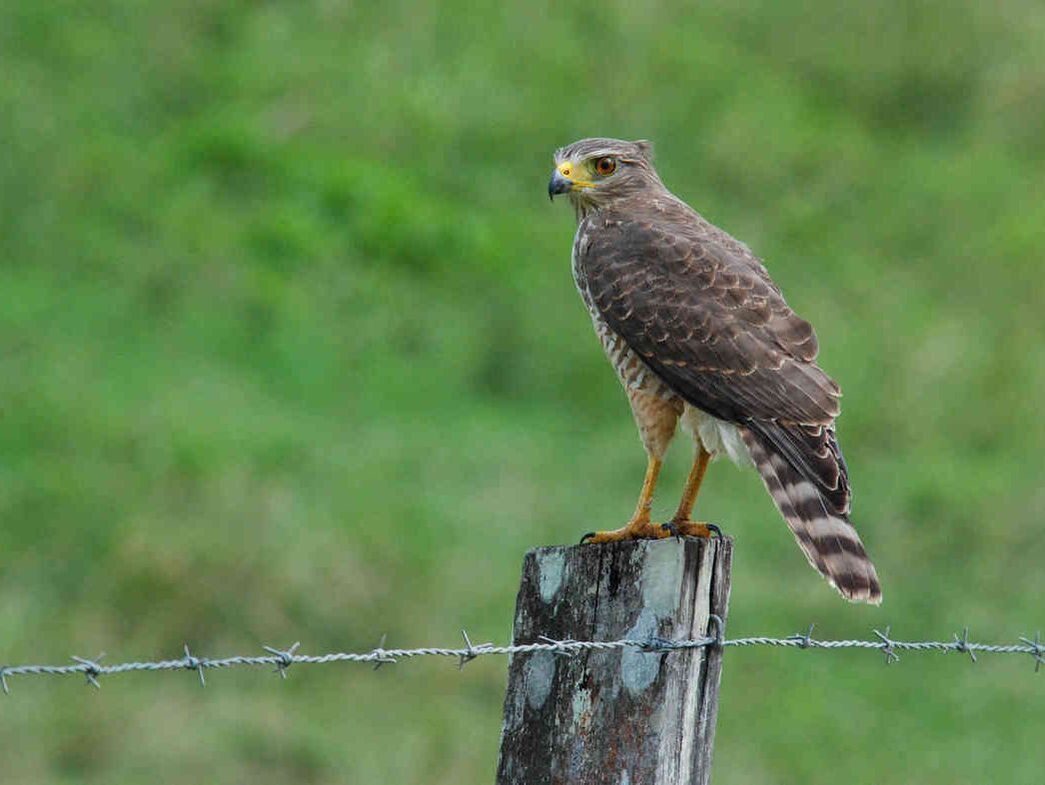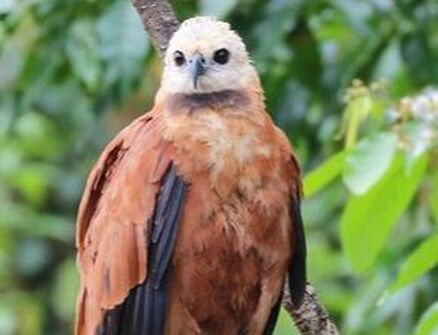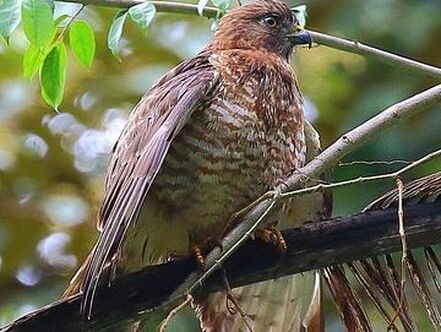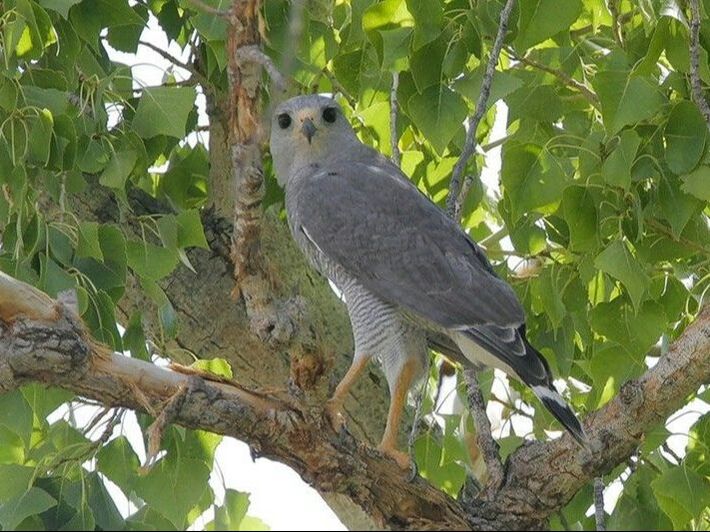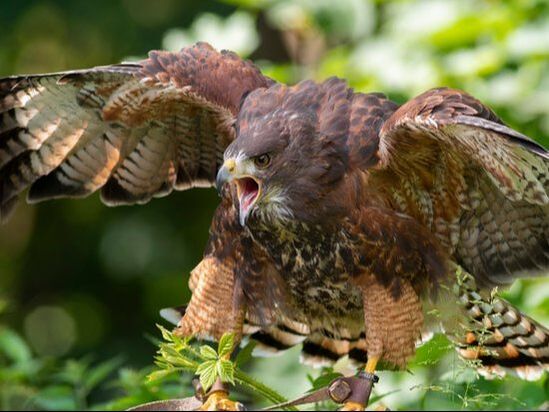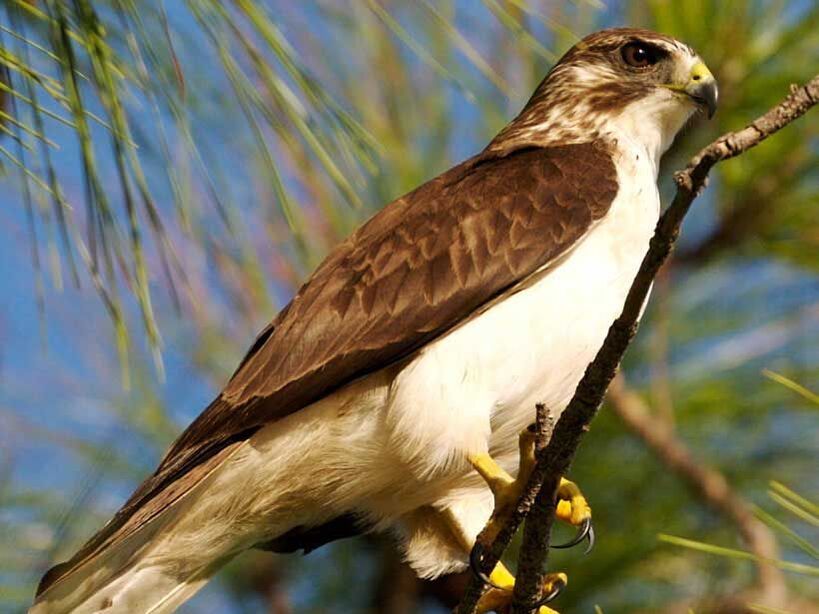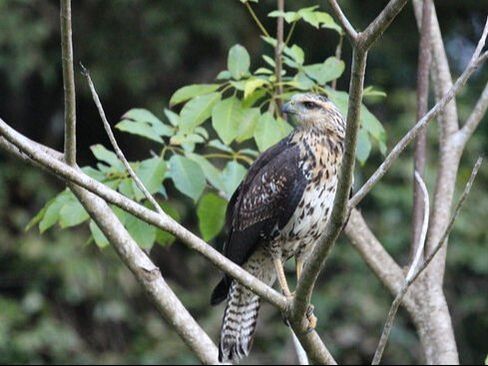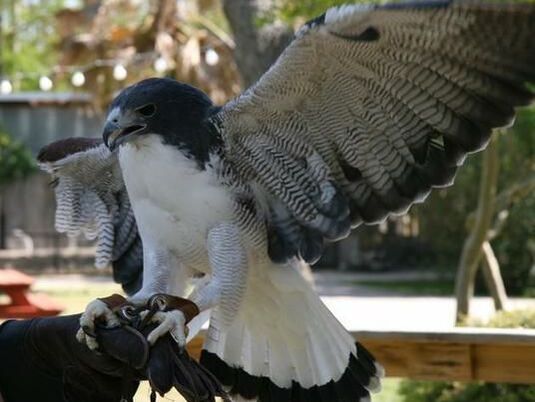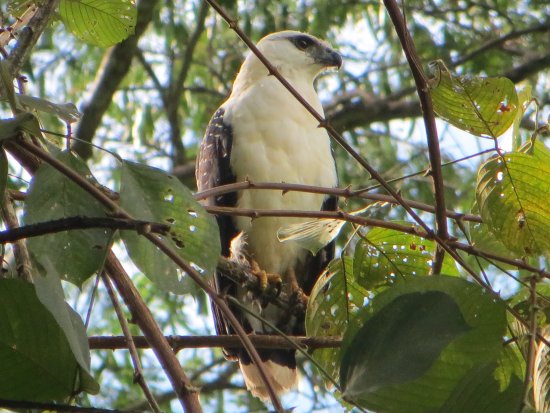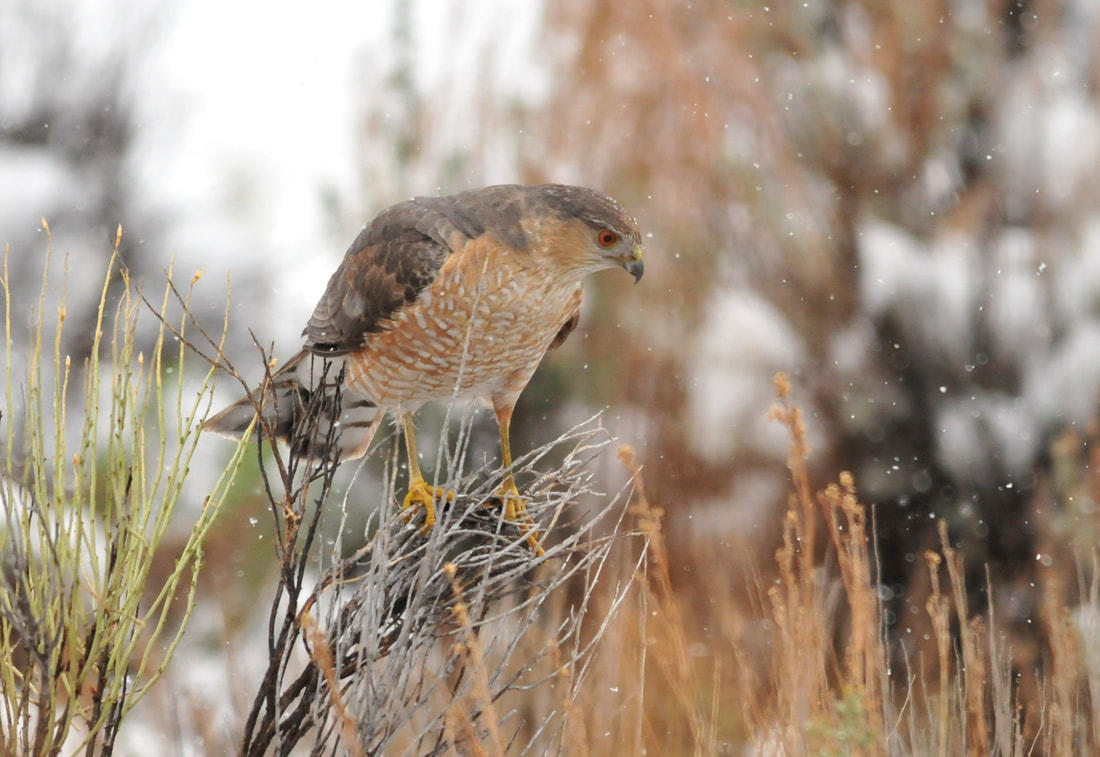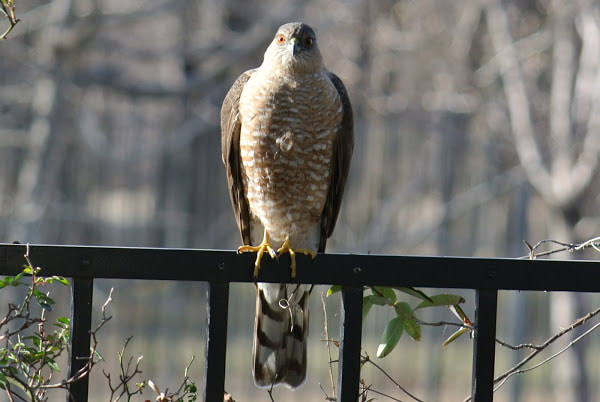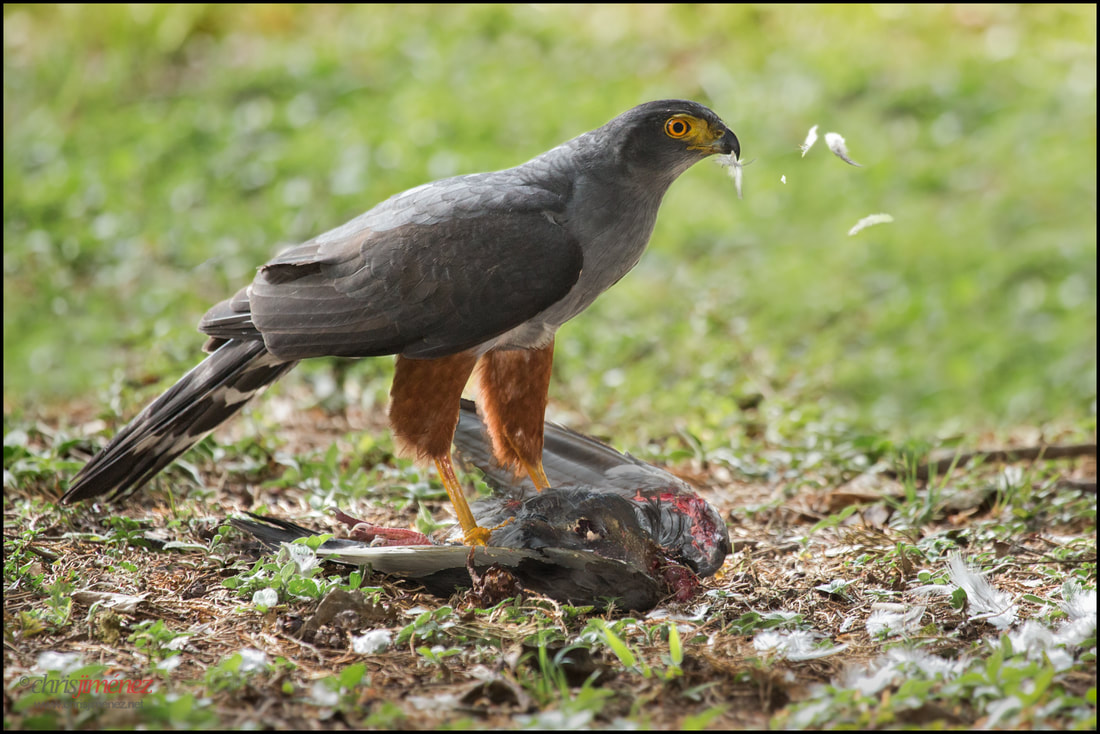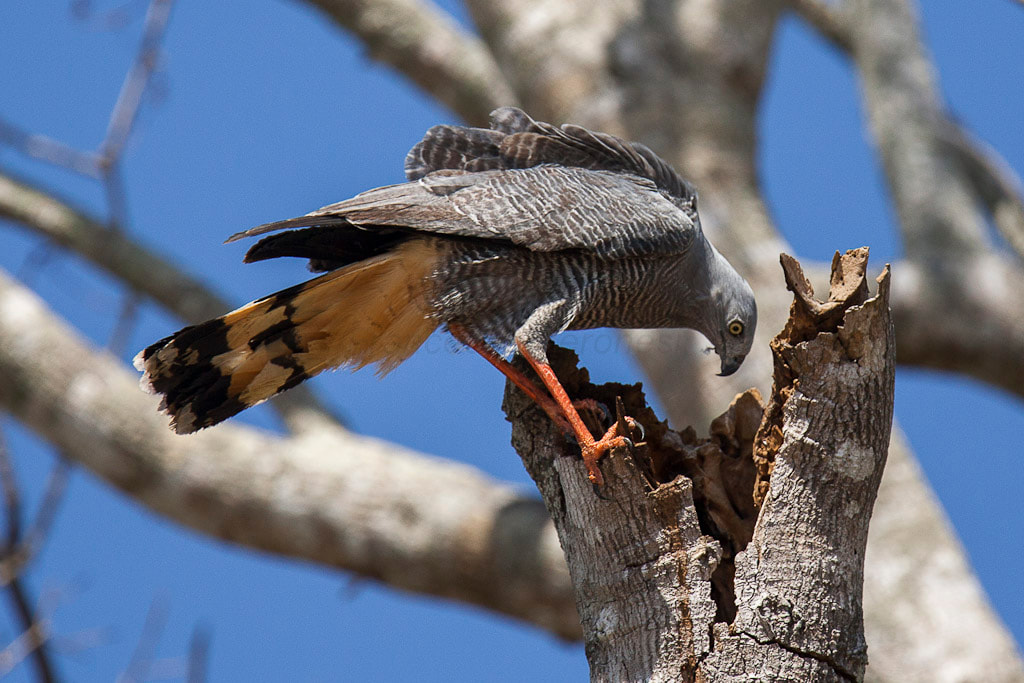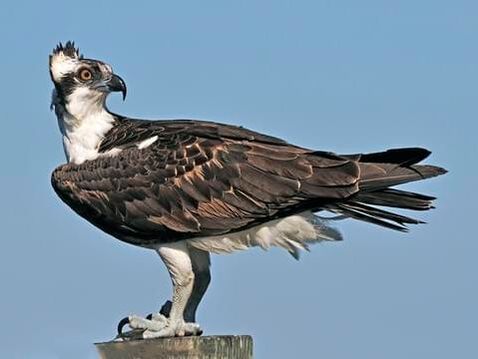Hawks & Osprey - in Belize
Zone-Tailed Hawk
ZONE TAILED HAWK - The Zone-tailed Hawk is a sleek, blackish raptor of arid foothills and canyons in the southwestern U.S. These birds have an intriguing similarity to Turkey Vultures—they fly with their wings slightly raised and occasionally rock back and forth as the vultures do. Their lightly barred flight feathers even create a two-toned effect similar to the vulture’s wing pattern. While this could be a coincidence, it’s been suggested that Zone-tailed Hawks may mimic the relatively harmless Turkey Vulture in order to fool their prey of birds, mammals, and lizards.
BELIZE HABITAT - Open country, including pastureland, savannas, rice fields, and shrimp farms. Where can I find this bird in Belize? Very uncommon visitor, mid-October to mid-April. To some extent, may be overlooked because of its similarity to Cathartes vultures and some Short-Tailed Hawks. INTERESTING BIRD FACTS
|
Common-Black Hawk
COMMON BLACK HAWK - On warm summer evenings, Common Nighthawks roam the skies over treetops, grasslands, and cities. Their sharp, electric peent call is often the first clue they’re overhead. In the dim half-light, these long-winged birds fly in graceful loops, flashing white patches out past the bend of each wing as they chase insects. These fairly common but declining birds make no nest. Their young are so well camouflaged that they’re hard to find, and even the adults seem to vanish as soon as they land.
BELIZE HABITAT - Typically, open wooded areas near water, forest edge, towns and mangrove forests. Where can I find this bird in Belize? Fairly common resident near coast and along major river systems, much less common in upland areas. Resident of Ambergris Caye, Caye Caulker, and several inshore cayes; recorded also in Half Moon Caye. INTERESTING BIRD FACTS
|
Great Black Hawk
GREAT BLACK HAWK - Uncommon in forest, marshes, and mangroves, where usually greatly outnumbered by similar Common Black Hawk. Slightly larger and lankier than Common Black Hawk, with longer legs and tail, and adults of the two species have very different calls in flight. Adult Great Black has 2 white tail bands (1 on Common) and less extensive yellow in face. Immature looks whiter-headed than Common (no big black moustaches), and its longer tail has narrower and more numerous pale bars. Usually warier than Common, which can be quite unconcerned by people.
BELIZE HABITAT - Generally found in more densely wooded areas than the proceeding, often but not always near water; also feeds in rice fields and other open areas. Where can I find this bird in Belize? Found nearly throughout on mainland; generally less common near coast than the preceding species, but more frequent in inland and upland areas. |
Roadside Hawk
ROADSIDE HAWK - Well-named, the common roadside hawk in tropical lowlands of East Mexico and Central and South America. Often seen on wires, phone poles, posts out in fields. Adult has staring pale eyes, streaked breast contrasting with barred belly. Immature streaked below, much like many other immature hawks, but its tail has broad and fairly even bands. Flies with rather quick, stiff wingbeats, recalling a Red-shouldered Hawk or an Accipiter; noisy flight display mainly in late winter-spring.
BELIZE HABITAT - Widespread in broken woodland and forest edge, including roadsides and tree-lined rivers; occasionally seen in forest interior at army ant swams. Where can I find this bird in Belize? Common resident on mainland; uncommon on Ambergris Caye. |
Black-Collard Hawk
BLACK COLLARD HAWK - Attractive chunky hawk of marshes and wetlands. Usually seen perched quietly near water, waiting to swoop down and snatch fish or frogs. Adult is distinctive, with mostly orange plumage and a whitish head (black collar is often hard to see). Immature is brownish overall, duller than the adult, but with a similar pattern. Note rather pale, dull pinkish legs and feet (yellow or orange on most other hawks). In flight looks very broad winged and short tailed.
BELIZE HABITAT - Forested edges of sluggish rivers and lagoons. Where can I find this bird in Belize? Uncommon to fairly common resident locally on mainland west to central Orange Walk and south to northeast of Cayo and northeast of Stan Creek. |
Broad-Winged Hawk
BROAD WINGED HAWK - Rather small, compact hawk; about the size of Red-shouldered Hawk, smaller than Red-tailed Hawk. Adults are solid brown above, barred reddish-brown below with bold black-and-white tail bands. Immatures similar, but with blotchier markings below and thin, diffuse tail bands. Distinctive shape in flight: note the short tail, straight leading edge of wing, and bulging secondaries in flight. Listen for high-pitched, piercing whistle coming from woodlands during breeding season. Known for forming massive flocks called kettles during migration, when it travels from the U.S. and Canada all the way to winter in Central and South America.
BELIZE HABITAT - Forest edge and open country with scattered trees. Migrates over most terrestrial habitats, especially along the coast. Where can I find this bird in Belize? Very uncommon transient and regular winter visitor, mid-October to late March; mostly in south half; recorded once each on Ambergris Caye and Caye Caulker. INTERESTING FACTS
|
Gray Hawk
GRAY HAWK - Compact raptor. Adults distinctive, all pale gray with thin white bars on underparts. Tail banded black and white. Juvenile is brown and streaky. Juveniles are similar to juvenile Broad-winged and Red-shouldered Hawks, but have bolder face pattern, paler underwings, and a small white patch at the base of the uppertail. Found in shrubby riparian woodland. Usually seen singly.
BELIZE HABITAT - Forest edge, roadsides, open country with scattered large trees. Where can I find this bird in Belize? Fairly common resident on mainland; occasionally on Ambergris Caye. INTERESTING FACTS
|
Red Tailed Hawk
RED TAILED HAWK - Most common roadside raptor across much of North America. Often perches atop telephone poles, light posts, and edges of trees. Incredible variation in plumages, including less common dark morphs and various regional differences. Eastern adults have brilliant reddish-orange tail and pale underparts with obvious band of dark marks across belly. Western birds are typically darker. Immatures do not have a red tail.
BELIZE HABITAT - Submontane pine and mixed pine broadleaf forest; occasionally in lowlands. Where can I find this bird in Belize? Uncommon resident in and near Mountain Pine Ridge Cayo, and recently in north Orange Walk; also reported from west Orange Walk, Ladyville Belize, Cockscomb Basin Stann Creek, and Payne's Creek in Toledo District. |
Short-Tailed Hawk
SHORT TAILED HAWK - Rather small hawk that is often seen soaring on flat wings with tips swept upwards, suddenly dropping out of the sky like a rock. Dark morph adult is very dark brown with paler undersides on outer flight feathers. Dark juvenile similar but is distinctly spotted below, and lacks the terminal band on the wings. Light morph adult is clean white below and brown above with rusty patch on the side of its neck, a dark hood and a white throat. Light morph juvenile is similar but lacks rusty patch. All birds have a faintly banded tail. Most similar to Broad-winged Hawk, which is never clean white below. Dark morph Broad-winged separable from dark morph Short-tailed Hawks by tail pattern and wing shape.
BELIZE HABITAT - In or over most habitats from dense woodland to open savannas. Much more often seen in flight than perched. Where can I find this bird in Belize? Uncommon to fairly common resident on mainland. |
Swainson's Hawk
SWAINSON'S HAWK - Longer-winged than Red-tailed Hawk, but otherwise the same size. Found in prairies and agricultural regions of western U.S. and Canada in warm months. Varies in color from rather pale with white belly to completely brown. Light morph is more common with brown breast band contrasting with white throat and belly. In flight from below, note dark primaries and secondaries contrasting with whitish forewing of light morph. Winters in South America and along Pacific coast of Central America. Extremely rare in U.S. in winter.
BELIZE HABITAT - Could be seen in flight over most open habitats. When perched, on fence posts or snags; on ground, in open fields, grassland, and savannas. Where can I find this bird in Belize? One documented record; subad. near Big Falls Toledo on November 30, 2001. INTERESTING FACTS
|
White-Tailed Hawk
WHITE TAILED HAWK - Strikingly patterned raptor, usually found in open grassy areas or agricultural fields with scattered bushes. Wings are long and pointed but broad at the base which makes the tail look relatively short. Adults are clean white below with gray upperparts and rufous patch on shoulder. Tail is white with black band near the tip. Young birds are darker with dark markings on the belly; especially note dark gray wings, pale grayish-brown tail, and wing shape. Hovers more frequently than other large raptors. Widespread in Central and South America; limited range in U.S.
BELIZE HABITAT - Open country, primarily savannas and pastureland. Where can I find this bird in Belize? Uncommon resident on mainland south to central Cayo and in coastal savannas, central of Maya Mountains south to northeast Toledo; strays to south Toledo. |
White Hawk
WHITE HAWK - Spectacular, broad-winged, short-tailed hawk of lowland tropical forest. Usually seen soaring in mid-late morning or perched quietly in the forest canopy. Basically unmistakable, but beware of rare albino forms of other hawks. Plumage is white overall with black wingtips and a black tail band. Immature has more black on wings, as do adults of populations in southern Central America. Note dark eyes and pale grayish base to the bill (versus yellow on most hawks).
BELIZE HABITAT - Primary and old secondary broadleaf forest and forest edge. Where can I find this bird in Belize? Uncommon resident on mainland, mostly away from the coast, north to west Belize and central Orange Walk. |
Cooper's Hawk
COOPER'S HAWK - Small to medium-sized hawk with relatively short rounded wings and rounded tail. Adults are gray above with pale orange barring below; immatures are browner and streaky. Very similar to Sharp-shinned Hawk, but larger with bigger head. Also note deeper, slower wingbeats. Breeds in forested areas; more common in suburban areas than Sharp-shinned Hawk. Feeds mainly on birds captured in flight. Often stalks feeders in search of prey.
BELIZE HABITAT - Similar to that of the preceding species. Where can I find this bird in Belize? Very uncommon transient and regular winter visitor on mainland south of Corozal, late September to early March. |
Sharp-Skinned Hawk
SHARP SKINNED HAWK - Small hawk with relatively short rounded wings. Adults are gray above with pale orange barring below; immatures are browner and streaky. Very similar to Cooper's Hawk, especially in plumage, but smaller overall with smaller head, more squared-off tail, and more petite feet. Also note quicker, snappier wingbeats. Breeds in extensive forests. Feeds mainly on birds captured in flight. Often stalks feeders in search of prey.
BELIZE HABITAT - Submontane pine and mixed pine/broadleaf forest; occasionally in lowlands. Where can I find this bird in Belize? Uncommon resident in and near Mountain Pine Ridge in Cayo, and recently in north Orange Walk; also reported from west Orange Walk, Ladyville Belize, Cockscomb Basin Stann Creek, and Payne's Creek in Toledo. |
Bi-Colored Hawk
BI-COLORED HAWK - Elusive bird-eating hawk of tropical forest in humid lowlands. Does not soar and is rarely seen. Most often encountered perched quietly at middle to upper levels inside the forest or at the edges of clearings. Note the staring amber eyes (yellow on immatures) and long yellow legs. Adult is gray overall with rusty thighs (can be very hard to see on a perched bird). Immature is creamy to pale rusty below. All plumages lack dark streaking or barring on underparts.
BELIZE HABITAT - Primary and secondary broadleaf forest. Where can I find this bird in Belize? Uncommon resident on mainland but not often reported, because it resides in dense forest and seldom vocalizes away from nest. |
Crane Hawk
CRANE HAWK - Variably colored hawk with a small head and long legs. Frequents tropical lowlands, especially marshes, but also forest, woodland patches. Usually seen perched, at times clambering and flapping while using its double-jointed legs to grope around for prey in tree crevices. Adult has long reddish legs; Central American and northern South American birds have red eyes, while southern South American birds have yellow eyes. Immature has white-grizzled face. Long tail has 2 broad white bands, obvious in flight. Wingbeats rather loose and floppy, and soars rather infrequently.
BELIZE HABITAT - Forested streamsides, forest edges, savannas, roadsides. Often forages in large trees with bromeliads, typically near water. Where can I find this bird in Belize? Uncommon resident in north half; scarce in south. One record from north Ambergris Caye, where possibly resident. |
Osprey
OSPREY - Unique among North American raptors for its diet of live fish and ability to dive into water to catch them, Ospreys are common sights soaring over shorelines, patrolling waterways, and standing on their huge stick nests, white heads gleaming. These large, rangy hawks do well around humans and have rebounded in numbers following the ban on the pesticide DDT. Hunting Ospreys are a picture of concentration, diving with feet outstretched and yellow eyes sighting straight along their talons.
BELIZE HABITAT - Most coastal and offshore areas with open water for feeding and trees or poles for perching; less commonly in vicinity of larger inland bodies of water. Nests on exposed platforms created by broken tree trunks, poles, old light-houses, and other structures. Where can I find this bird in Belize? It nests in the cayes and coastal lagoons. Uncommon to fairly common winter visitor in coastal lowlands and offshore cayes, where may be seen with ridgwayi. Occasionally seen far from aquatic habitats. INTERESTING BIRD FACTS
|

